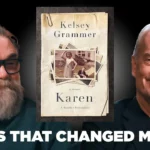In an age where digital tools can generate landing pages in seconds, it’s easy to assume that flashy design and optimized code are all you need to convert visitors. However, while automation handles the layout and structure, the human element — storytelling — remains crucial for turning curious clicks into committed customers.
The Human Brain is Wired for Stories
Scientific studies have shown that narratives activate multiple parts of the brain, notably those involved in emotion and memory. When your landing page includes a relatable story, visitors are more likely to remember your message and engage with your brand.
Even if your page is generated using AI or a no-code tool, injecting a compelling story into the text can elevate it from forgettable to irresistible. It’s not just about listing features — it’s about showing how your product fits into your audience’s lives and solves their problems.
Why Storytelling Makes a Difference
Most landing pages follow a templated structure: a hero section, a benefit list, a call to action. These elements are important, but what makes them effective is how they are presented. Storytelling gives these sections meaning.
Here’s how storytelling can impact a landing page:
- Builds trust and relatability: A short, personal narrative can make your brand feel human and approachable.
- Creates emotional connection: People make purchasing decisions with their hearts before their heads.
- Highlights benefits through experience: Instead of stating features, storytelling shows how real people benefit from them.
- Drives engagement: A good story keeps visitors scrolling and wanting to learn more.
[ai-img]person reading screen, storytelling, digital marketing[/ai-img]
Storytelling in AI-Generated Landing Pages
Tools that generate landing pages often rely on templates and user input to produce content. While they can create technically sound pages, the narrative component is usually lacking unless the user consciously adds it.
That’s where your input matters. By weaving a story into your value proposition, testimonials, and product descriptions, you give life to an otherwise generic page. For instance:
- Instead of saying: “Save time with our project management tool.”
- Say: “Meet Jessica, a busy marketing manager who shaved hours off her weekly workflow with our intuitive dashboard.”
This simple reframe transforms a bland benefit into a mini story, helping the user see how the tool could impact their own life.
Best Practices for Using Storytelling
When integrating storytelling into AI-generated pages, consider the following best practices:
- Start with a character: Your story needs a relatable figure — often your ideal customer — facing a specific challenge.
- Show the struggle: What problem did they face? Make it specific and emotional.
- Introduce your solution: How did your product or service help them?
- End with a transformation: Demonstrate the positive results and how life improved for your character.
This structure taps into the classic “Problem-Solution-Result” formula, which resonates well across industries.
[ai-img]marketing funnel, website conversion, storytelling impact[/ai-img]
Storytelling Works Across All Industries
Whether you’re selling software, coaching services, or eco-friendly products, stories provide a universal tool for engagement. Even in B2B environments, decision-makers are still human beings influenced by emotions, narratives, and personal success stories.
Let’s say you’re promoting a cybersecurity tool. Instead of detailing technical specs upfront, start with a narrative:
“Two weeks before Black Friday, an e-commerce company received a suspicious login attempt. What happened next could have destroyed their entire holiday campaign — until one line of defense saved them…”
That kind of opener commands attention far better than a dry bullet list of firewall features.
Combining Automation with Authenticity
AI tools and page builders are extremely powerful — they handle the heavy lifting, from responsive design to conversion analytics. But they still rely on human insight to make the content truly resonate. Automation gives you the framework. Your story gives it soul.
The best strategy? Use the efficiency of AI to handle structure, and invest your energy in crafting a story that aligns with your brand voice and customer experience.
Final Thoughts
In a marketplace full of lookalike pages and copycat headlines, storytelling is your competitive edge. Don’t let auto-generated content become the default voice of your brand. Take advantage of the tools, but always infuse your message with the power of narrative.
Remember: people forget features, but they remember feelings. And nothing generates feeling like a well-told story.









